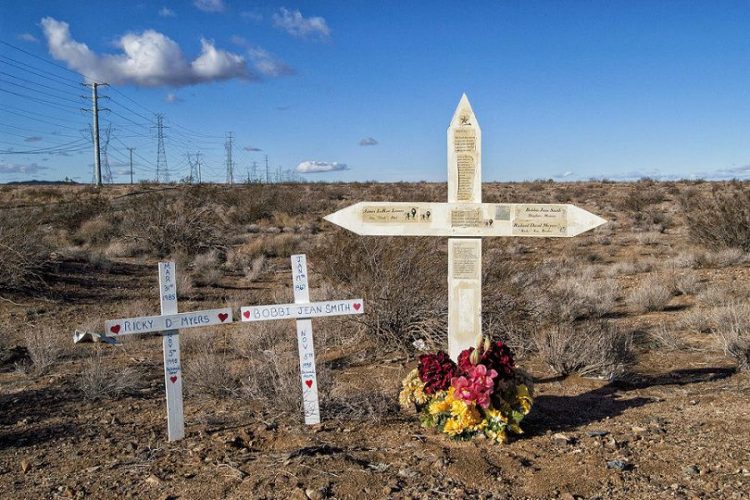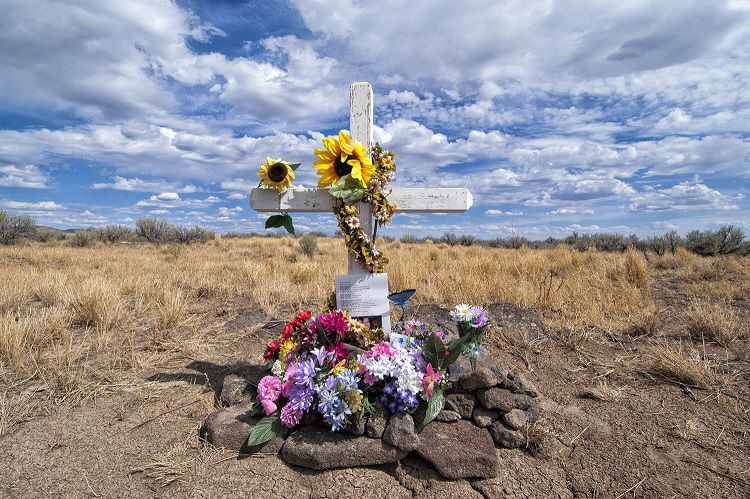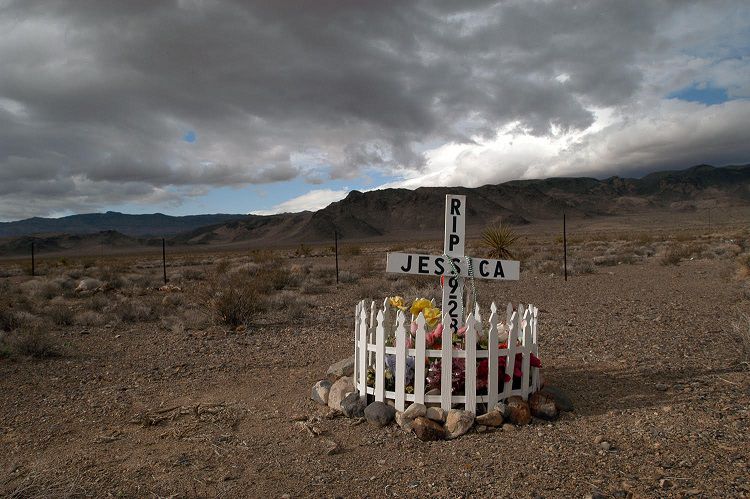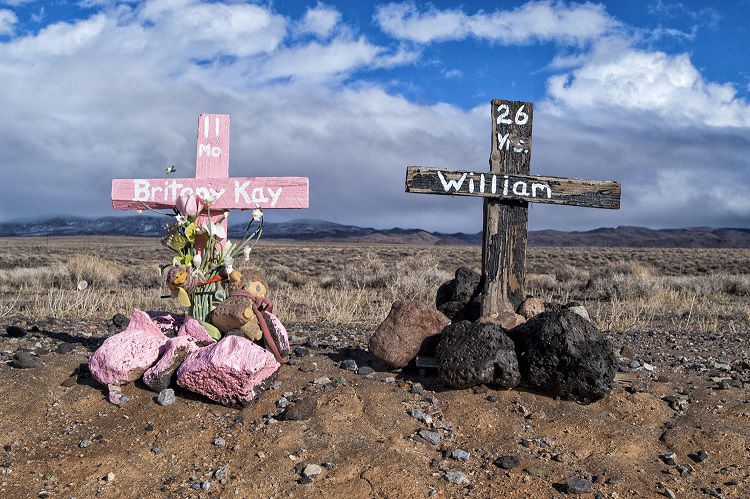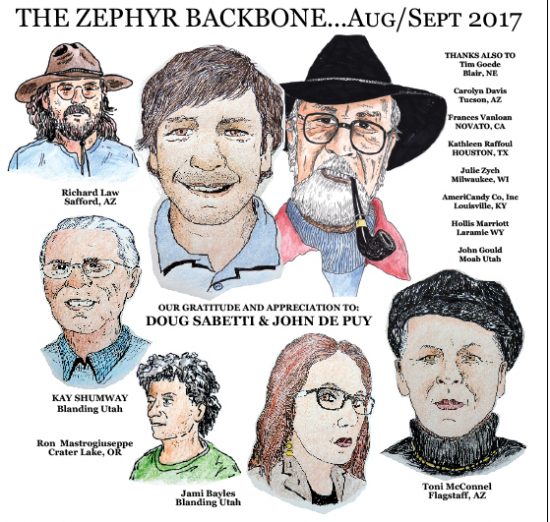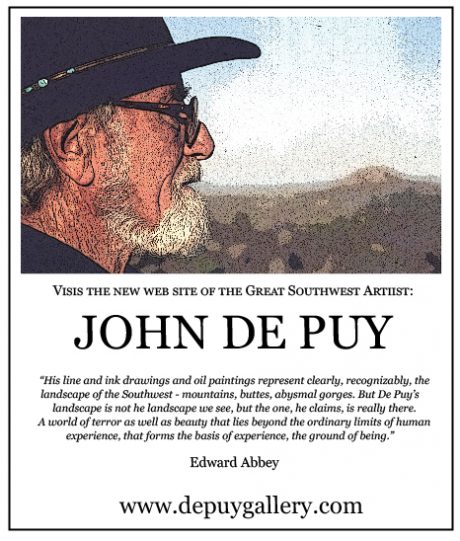Paul Vlachos is a New Yorker who understands The West. And he is a New Yorker who understands New York. Wherever Paul goes, he finds signs of life…His story first appeared here, in The Zephyr, several years ago…JS
I spotted my first roadside memorial as a child from the back seat of my family’s 1960 Oldsmobile Rocket 88. Of this I am certain. How do I know? I have no actual proof or defining memory. They have been in my consciousness, though, since I was a child and, since my window on the world was that back passenger window in the black Olds, that must have been the case. Basic empiricism.
I took the world in as it rushed by – poles, signs, roadside attractions, stores, people. Everything would blur past, but I’d keep my nose to the glass or hang my head out the window like a dog, my mom yelling at me to pull myself back in. I don’t recall the memorials being a major fixture in my consciousness during my teen years, but I was too busy being a teenager by that point. I had less time to gawk and stare.
I went to Greece in the early 1980s and, on the treacherous mountain roads in the north, roadside memorials slammed back into my consciousness. Every sharp turn and steep embankment seemed to have a little shrine next to it, where someone had died in a violent accident. No simple crosses, these memorials were small structures – elaborate miniature churches on poles with votive candles and other objects inside. Some of them were simple, many were detailed and complex, with steeples and crosses mounted on top. They were everywhere, always in the most dangerous places, and it got me to thinking about mortality and remembrance. As someone of Greek ancestry, I’d like to proudly claim that we cornered the market on gloomy, morbid reminiscence. We did, after all, invent worry beads. After many more years on the planet, though, I now know that it is simply the human condition, expressed via different regional and cultural flavors.
As I hit my 30s and began to crisscross America by car, I tuned in again to these memorials which, in the U.S., primarily take the form of a simple cross. Every state has them and they exist on all roads, from the interstates of the Northeast to dirt tracks in the back country of Wyoming. I have seen them on overpasses in New York City and on the main drag in Bakersfield. And, of course, everywhere in between. They are in all parts of the country, but seem to be especially concentrated in the southwest. They are in the medians, or just off the road’s edge, or on little ridges above the road, or in gullies below the road. There is no regularity or method to their placement, although, generally speaking, it seems that they end up where the accident happened or where the car landed. There is never an explanation. The memorial is the statement. Sometimes, people have left messages or a poem, laminated in plastic. Sometimes, people have left flowers. And sometimes, they are untended, tilting and fallen down. These are the saddest in an already sad pantheon. What is more poignant than a neglected and forgotten memorial? Probably a lot of things, but I won’t go into that here.
They are almost all in dangerous places, which makes sense, and they are often difficult to photograph. I have stopped for some, in remote areas, and marveled at the beauty of the location, then thought back to what the accident scene must have been like, the flashing lights and the wrecker pulling the vehicle out of the weeds. Some are impossible to photograph and I just have to drive by and nod. For the most part, they are crosses, but I have seen one Star of David memorial, built out of wooden slats. On the main road through the Tohono O’odham Nation, in southern Arizona, I saw many that resembled the little churches on poles that I saw in Greece, although these churches were in the adobe style. There were so many on that particular road that I stopped at least a dozen times. This must have looked suspicious, as I was eventually pulled over by a local tribal police officer and told to stay on the pavement. He then followed me until I was off the reservation.
I went through a period – from the late 90s through about 2005 – when I shot about 500 of these memorials. They seemed to be everywhere I went and I kept stopping to photograph them. I began to make decisions about my next turn based on where the road of crosses would lead me. I am not a religious man, but I would stop and offer a short prayer or a moment of silence every time I documented one. I have rarely shot them since, although a few have been too compelling to pass by. I’m going to include six here, but I’m not going to comment on any of them, out of respect for the dead.
.Former Zephyr contributor PAUL VLACHOS now writes for JUKE.PRESS. A REDUX of this story appears here on Juke,

